Home > Heroic Role Reversal: Skul: the Hero Slayer Review

Skul: The Hero Slayer is a 2D pixel art roguelite adventure platformer created by indie company SouthPAW Games. While this may tagline may sound familiar to some, Skul: The Hero Slayer attempts to differentiate itself from the rest of this genre. But, does it succeed?
Platforms: Steam [Reviewed]
Developer: SouthPAW Games
Publisher: NEOWIZ Games
Release: January 20, 2021
MSRP: $19.99
Press Copy provided by NEOWIZ Games
Skul: The Hero Slayer might seem bland at first, but under the surface, Skul hides a surprising depth of game design. But, before evaluating the gameplay of Skul, let us first consider the presentation.
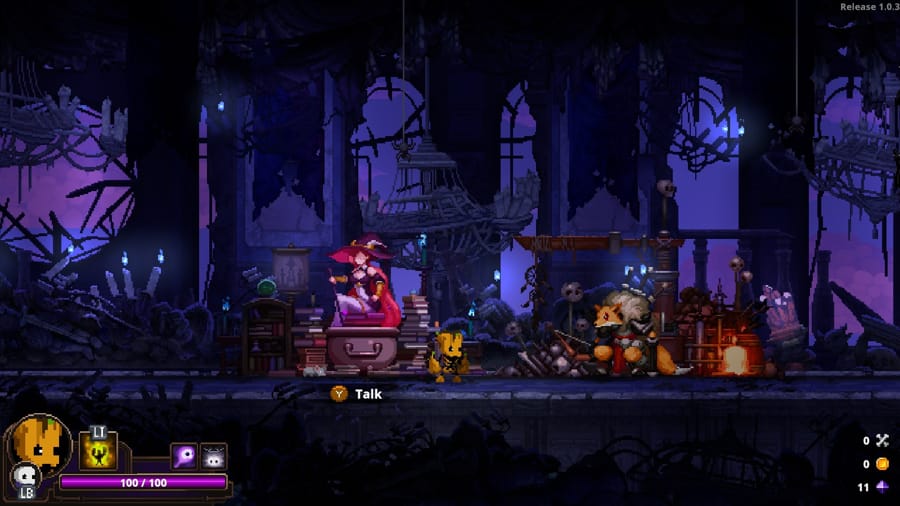
In terms of audio presentation, Skul's audio is both fitting and satisfying. The bones that characterize a vast amount of the game's cast sound sufficiently hollow and weak, while the metallic sounds are a true pleasure to hear. Visually, the game's pixel art is genuinely beautiful. I haven't seen pixel art of this caliber since Duelyst's unfortunate demise. Animations are smooth and the colors are vibrant, making it a true visual masterpiece as far as games are concerned.
However, games that excel in their visual presentation are common, especially with a pixel art style. for instance, Dead Cells and the Binding of Isaac both create beautiful, dynamic pixel art that is both visually clear and a pleasure to look at. This sort of presentation is hard to get right, but many indie games, in particular, excel at and master it, and Skul is no exception.
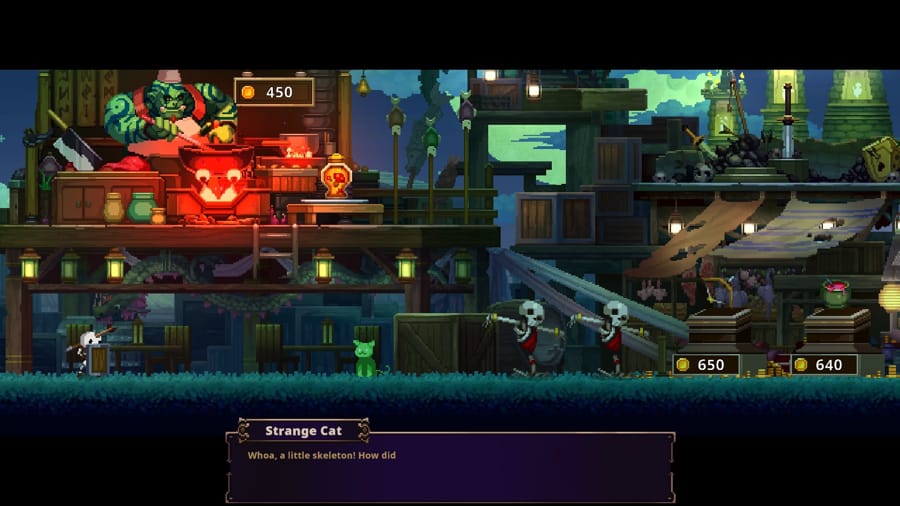
Skul's gameplay is unique, combining the side-scrolling movement-based combat of Rogue Legacy with the hit stun of a fighting game. Hits that connect will send opponents into a brief state of vulnerability, allowing you to chain your attacks. Even so, there are often so many enemies that fighting by chaining hits is not only rare but also impractical. However, it is common enough that it makes the potential of landing a chain of hits infinitely more appealing.
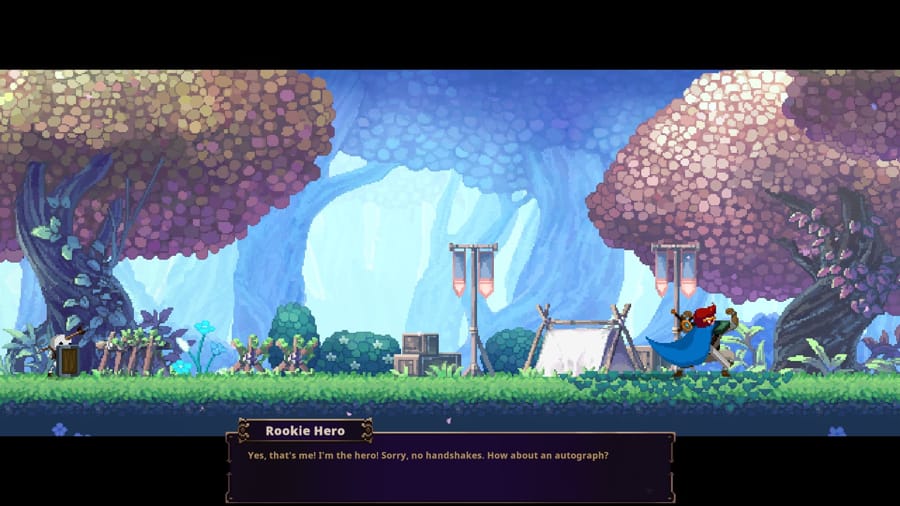
Skul lures you into a sense that if you could only get better at dodging attacks, you could get through it so much faster. This feeling is not particularly rare among roguelites, and the sense of progression enables and augments this. However, the primary improvement comes from an increase in skill, and Skul leans heavily on this. For instance, learning you can teleport back to your base skeleton form's head is an important discovery. It optimizes your gameplay and increases your ability to perform flashy plays against unaware enemies.
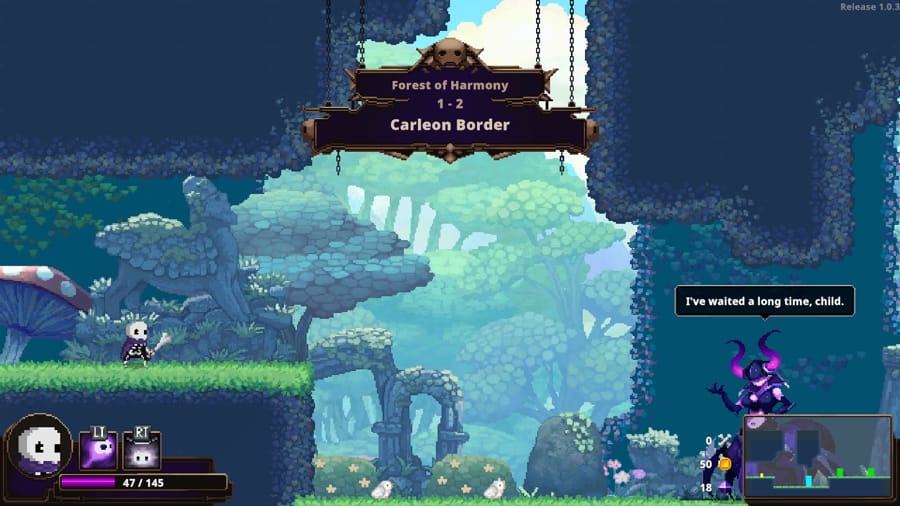
However, this sense of wanting to get better to avoid specific areas is not a pleasant one sometimes, especially if the areas are repetitive. This is where Skul's major flaw comes in. It is very fun to chain hits, dodge, and perform flashy combos against groups of enemies the first time. But what about the exact same room layout with the exact same items a second, or a third time? I found myself getting bored of these rooms fairly quickly, even with the variety of new classes and weapons made available by an NPC unlocked in the early game.
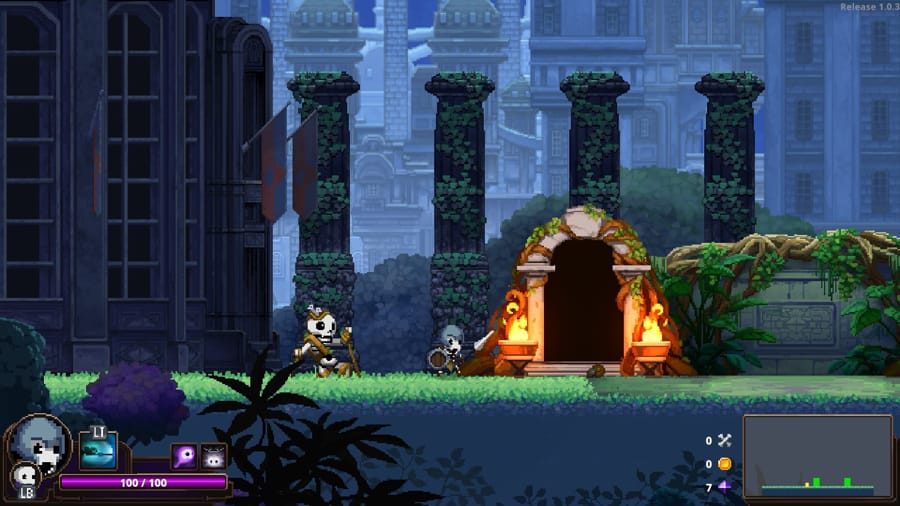
This is made worse by the bosses, who are repetitive damage sponges that can take hits for minutes at a time waiting for you to make a single mistake that ends your run. They are frustrating, un-fun, and truly annoying, especially after fighting them multiple times.
Progression in Skul is done by unlocking new merchants, items, and passive bonuses at the hub world. This is not an unusual method of progression, but it is also not a bad one and has shown itself to be a very solid approach many times for many different games. Although the bonuses are minor, they add up very quickly providing an addicting incentive to keep playing.
While Skul's gameplay may be repetitive, it is also extremely satisfying to make it further than before. But, while it is extremely solid, it fails to excel in the category that matters most: playability. Despite this, its strengths outweigh its weaknesses and earn it our recommendation.
Pros:
- Visually stunning pixel art
- Smooth animations
- Audio presentation is excellent
- Weapons are unique and items nearly always have a niche
- Progression is satisfying
- Unique combo-based combat
- Early game is well balanced
Cons:
- Late game can become a hassle
- Early runs are repetitive
- Bosses are truly annoying to fight
- Punishing gameplay
- Lack of enemy and stage variety
- Player improvement can stagnate very quickly
Verdict:

Great
Great games are generally good buying decisions and are recommended for those with an interest in the genre. There might be a few flaws that detract from the gameplay, stories, controls, presentations, or value, but the game is still an enjoyable experience that justifies a full playthrough.
Want to know what this score means? Check out our Scoring Guidelines page.
About the Author:
Collin Westbrook
Collin Westbrook joined in 2010 to help with Zelda Castle, and has since rejoined the staff multiple times throughout Nintendo Castle's existence. He is a lover of strategy games, platformers, and everything Nintendo. Look out for him editing guides, writing articles, and helping the site in whatever way he can.